- How to Evaluate if the Horse is Balanced
- How to Evaluate Structural Correctness
- How Structural Correctness Influences Way of Going
- Evaluating Muscling
- Summary
When examining horses for conformation, either when considering a purchase or competing in horse judging contests, it is important to break things down into key principles to avoid becoming overwhelmed when putting the overall picture together. There are five main criteria to evaluate when examining a horse's conformation: balance, structural correctness, way of going, muscling, and breed/sex character (also known as type).
Balance is arguably the most critical aspect to evaluate when examining the horse. Balance is essential for both quality of movement and performance in any event, and is determined by the horse's bone structure. Balance refers to equal distribution of muscling and weight from the front of the horse to the back of the horse, from its top to its bottom and from side to side. However, balance is not determined by the horse's weight but instead by proper angles and proportions of different parts of the body. In other words, a horse can be light bodied or heavy bodied and still be balanced if its bone structure allows for equal distribution of that weight. Proper balance enables the horse to carry itself in a manner to allow for easy maneuverability, greater power and smoother movement.
Structural correctness is critical for soundness as well as correct and clean movement. This is determined by proper structure and alignment of bone, particularly pertaining to the legs. Structural correctness is tied very closely to balance and influences the way a horse moves.
Way of going, also known as tracking, refers to the way the horse moves. The horse is evaluated both for cleanness and quality of movement.
Muscling is also a consideration when evaluating the horse, though not nearly as important as balance and structural correctness. The quantity, quality and distribution of the muscle are evaluated when looking at the horse from its sides, front and back.
Breed and sex character (i.e., “type”) refers to how well a horse represents its particular breed and sex. Most breeds have unique qualities by which they can be identified. Judging a horse by its type refers to judging how well it resembles the ideal horse of that breed. This may or may not be important depending on the expectations of the horse. Horses competing in many performance events do not necessarily have to represent a breed or sex well to be competitive. However, for horses competing in halter events this criteria is important.
How to Evaluate if the Horse is Balanced
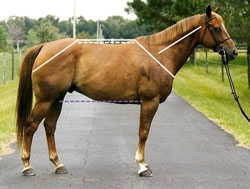 Figure 1: Ideal balance in the horse. All solid white lines are roughly equal in length. The dashed white line (length of topline) is shorter than the dashed purple line (length of underline).
Figure 1: Ideal balance in the horse. All solid white lines are roughly equal in length. The dashed white line (length of topline) is shorter than the dashed purple line (length of underline).The first priority when looking at a horse is to determine if it is balanced. To begin with, the horse should carry equal weight on his front end and back end and on his topline and underline. This is determined by the skeletal structure of the horse allowing for correct proportion of the horse's parts. The neck, shoulder, back and hip should all be approximately equal lengths and the horse's topline should be shorter than its underline (Figure 1).
.JPG)
.JPG) Figure 2: The horse on the top represents good conformation — the topline is shorter than the underline. The horse on the bottom represents a horse with a long, weak back — the topline and underline are similar lengths.
Figure 2: The horse on the top represents good conformation — the topline is shorter than the underline. The horse on the bottom represents a horse with a long, weak back — the topline and underline are similar lengths.A common flaw that negatively affects the horse's balance is a back that is long in relation to the neck and hip. An important ratio to consider when analyzing balance is the ratio of the topline to the underline. The topline is measured from the withers to the point of coupling. The underline is measured from a point under the belly between the horse's front legs to a point roughly even with the stifle (Figure 2). The topline should always be shorter than the underline in a balanced horse. A longer topline indicates that the horse has a long, weak back, which is often problematic due to long backs having weaker muscling. Longer back length also makes it difficult for the horse to bring its hind legs up under its body when it moves. The hind legs reaching under the body are the source of power for the horse to move forward and also allow the horse to maneuver and adjust easily. If a horse is unable to bring its hind legs well underneath its body, more weight must be carried on its front end, thereby reducing its power and maneuverability as well as leading to a more jarring impact for the rider.
.JPG)
.JPG) Figure 3: The horse on the top represents a balanced horse with roughly equal hip and wither height. The horse on the bottom represents a "downhill" horse with withers much lower than hips.
Figure 3: The horse on the top represents a balanced horse with roughly equal hip and wither height. The horse on the bottom represents a "downhill" horse with withers much lower than hips.Another important yet easy to determine criterion of balance is hip and wither height. Hip and wither height should be approximately the same. Often, a horse can be slightly "uphill," or higher at the withers, without being penalized. If a horse is "downhill," or lower at the withers than at the hip, the horse will carry more weight on its front end and lack maneuverability and driving power from behind (Figure 3). Carrying too much weight on the forehand can also lead to future lameness of the front legs. However, when evaluating young horses, it is important to remember that they will grow faster at the hip than at the withers; therefore, a young horse (e.g., horses showing in weanling, yearling, or 2-year-old classes) may be downhill as it is growing but may catch up as it reaches maturity.
 Figure 4: Depth of heart girth is a measure of body capacity. Ideally, the depth of heart girth (white solid line) is roughly the same as the distance from the chest floor to the ground (blue dashed line) and should be greater than depth of flank (solid red line).
Figure 4: Depth of heart girth is a measure of body capacity. Ideally, the depth of heart girth (white solid line) is roughly the same as the distance from the chest floor to the ground (blue dashed line) and should be greater than depth of flank (solid red line).Another consideration that can be grouped with balance is depth of heart girth. Depth of heart girth is not quite as critical to a horse's balance but is considered in this section since it is an important measure of the body's capacity to house the heart, lungs and other vital organs. It is desirable for the horse to have a deep heart girth. When drawing a line from the withers to the chest floor, this length should be approximately the same as the distance from the chest floor to the ground and should be greater than depth of flank (Figure 4).
Proportions to consider when determining balance
.JPG)
.JPG) Figure 5: Evaluation of shoulder slope. The horse on the top has a more ideal shoulder with an approximately 45-degree angle. The horse on the bottom has a much steeper, straighter shoulder, which can lead to more jarring movement and shorter stride length.
Figure 5: Evaluation of shoulder slope. The horse on the top has a more ideal shoulder with an approximately 45-degree angle. The horse on the bottom has a much steeper, straighter shoulder, which can lead to more jarring movement and shorter stride length.When determining whether a horse is balanced, it is important to examine certain ratios and angles of the body. The slope of the horse's shoulder is one of the most crucial aspects to consider. The slope of the shoulder ties in closely with many other body parts and proportions, such as length of back and neck. The slope of the shoulder measures the angle of the horse's scapula and is commonly measured from the top of the scapula near the withers to the point of the shoulder. If a line is drawn from the top of the scapula near the to the point of the shoulder and another line is drawn through the top of the scapula near the perpendicular to the ground, the ideal shoulder angle is approximately 45 degrees (Figure 5).
The slope of the shoulder directly influences the horse's stride length and smoothness. Too straight of a shoulder causes the horse to not be able to easily extend its front legs and therefore have a very short, jarring stride. Horses with a nicely sloped shoulder have a free flowing, smooth, long stride since they are able to reach farther with their front legs.
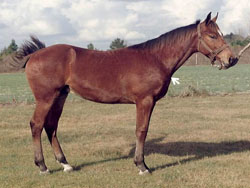 Figure 6a
Figure 6a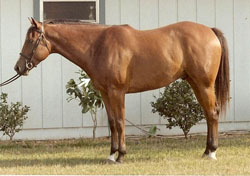 Figure 6b
Figure 6b 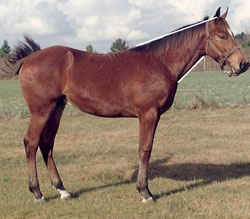 Figure 6c
Figure 6c The shape and tie-in points of the neck also influence the shoulder. The horse in figure 6a ties in high (white arrow) while the horse in figure 6b ties in low, giving it a heavier and less refined neck. Also, figure 6c shows a desirable 2:1 topline to underline ratio of the horse's neck, whereas the horse in figure 6b has almost a 1:1 ratio, contributing to a straighter shoulder and lower tie in.
The slope of the shoulder greatly influences the look of the horse's neck. A horse with a steep shoulder often has withers that tie into the neck much farther forward than a horse with a good shoulder slope, which leads to a shorter neck topline and a longer back. Such a horse will typically have a shorter stride coupled with more weight on its front end due to its longer back. A short neck is typically an undesirable characteristic because it causes the horse to lack flexibility of the neck, as well as typically being associated with a steep shoulder angle. Another important consideration when examining the horse's neck and shoulder is the point where the neck ties into the chest at the shoulder. It is preferred that the horse's neck tie in high to its chest to allow for greater slope to the shoulder and a neater, more refined neck. If the horse's neck ties in low, the neck tends to be much heavier at the base and the shoulder is usually straighter (Figure 6).
How the neck ties in to the shoulder also tends to also influence the shape of the horse's neck. An important ratio to consider when evaluating a horse's conformation is the ratio of the top of the neck to the bottom of the neck. The topline of the neck is measured from the poll to the withers and the underline is measured from the throatlatch to the shoulder junction. The ideal ratio would be a 2:1 topline:underline ratio. This allows the horse to have a more sloped shoulder since the withers will be set back well behind the point of the shoulder and also allows the horse to flex at the poll and carry his neck in a slight arch (Figure 6a). A horse that has a longer underline than topline is said to be "ewe necked." This is a very undesirable conformation trait as it typically is associated with a straight shoulder and a lack of ability to flex and lower the head.
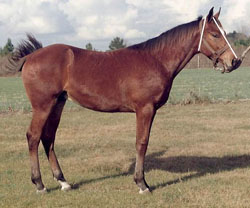 Figure 7: A horse with a refined throatlatch. The distance from the poll to the underside of the jaw is less than the distance from the poll to the muzzle.
Figure 7: A horse with a refined throatlatch. The distance from the poll to the underside of the jaw is less than the distance from the poll to the muzzle.One other ratio that is important to consider when looking at the horse's neck is the ratio of the throatlatch to the length of the head. The throatlatch is measured from the poll to the windpipe and should be roughly half the length of the head as measured from the poll to the muzzle. If the throatlatch is longer and thicker than this, it restricts the horse from flexing at the poll. Horses with deep, coarse throatlatches can possibly have trouble breathing when asked to flex their head towards their chest. This also detracts from a refined show quality appearance.
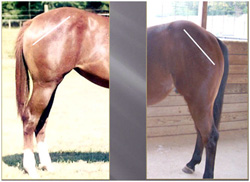 Figure 8: A closer look at hip angles. The horse on the left has a desirable hip with a nice turn and good length. The horse on the right has a very short, steep hip.
Figure 8: A closer look at hip angles. The horse on the left has a desirable hip with a nice turn and good length. The horse on the right has a very short, steep hip.Finally, the length and turn of the hip is also critical to a horse's athletic ability. In general, larger hips are better since they provide more power and musculature to propel the horse forward and carry its weight. Almost all disciplines of riding have maneuvers that require power and adjustability.
The larger and better shaped the hip is, the more power the horse will have. A horse's hip should be approximately the same length as its back. It is also important to consider the way the hip is shaped. The horse should ideally have a "nicely turned" hip and croup. The slope of the hip should be roughly the same as the slope of the shoulder. A horse with too flat of a hip will have trouble bringing its hind legs under itself, while one with too steep of a hip (a "goose rump") will lack the range of motion to provide power to the horse's movement. Additionally, the hip should tie in low to the gaskin muscling (muscling of the upper leg).
How important is the head when looking at balance?
.JPG)
.JPG) Figure 9: The horse on the top has an ideal head. Note the distance between the eyes and the position of the eyes relative to the head. The horse on the bottom has a head that is too narrow for its length.
Figure 9: The horse on the top has an ideal head. Note the distance between the eyes and the position of the eyes relative to the head. The horse on the bottom has a head that is too narrow for its length.The major function of the head, apart from essential purposes such as breathing, eyesight, etc., is to serve as a pendulum to balance the horse as it moves; therefore, it is critical for the head to be proportionally sized to the rest of the horse's body. The horse's head is heavier in proportion to the length of its neck than any other animal in the world and weighs, on average, 40 pounds. If the neck is the proper length and the head is proportionally sized to the rest of the body, it can function as a balancing aid for the horse's movement.
A classic example of this is the lame horse "head bobbing." When a horse has lameness or injury to a front leg, it limps by using its head to pull his body upwards; it lifts its head and pulls in the opposite direction of the injured leg. When it is lame in a hind leg, it will limp by lowering its head and pulling in the opposite direction of the back leg. In both instances, the head is acting as a pendulum to take weight off of the injured leg. Since the horse uses its head for balance, it is critical that the weight of the head be in proportion to the body. When a horse has too large and heavy a head, it tends to be unable to move weight off of its front end and therefore lacks in athletic ability.
Although the "ideal" head will vary somewhat among breeds, a few basic principles pertaining to the size and shape of the head are fairly universal. The distance from the poll to the midpoint between the eyes should be half the distance from the midpoint of the eyes to the midpoint of the nostrils. In other words, the eye will be positioned at about one-third of the distance from the poll to the nostrils. Also, the width of the horse's head from the outside of one eye to the outside of the other should be approximately the same length as the distance from the poll to a horizontal line drawn between the eyes. This width is important to provide room for the brain and also for sinuses, tear ducts and breathing canals located beneath the skull, as well as being aesthetically appealing.
.JPG)
.JPG) Figure 10: The horse on the top has a nicely shaped, refined head. The horse on the bottom has a slight Roman nose.
Figure 10: The horse on the top has a nicely shaped, refined head. The horse on the bottom has a slight Roman nose.Common structural characteristics of the head that are generally faulted are the Roman nose and the platter jaw. A Roman nose describes a condition in which the front of the horse's face is rounded outwards as opposed to being flat (Figure 10). This usually does not affect the use of the horse other than it is not as attractive and often adds weight to the horse's head. A platter jaw is condition that describes excessively large jaws on the horse. It also detracts from a refined look and is undesirable because it adds weight and interferes with the horse's ability to flex at the poll.
Other important considerations when examining the head are nostril size and eye size and shape. Nostrils should be large and round to allow maximum intake of air when the horse is working hard and breathing heavily. It is also desirable for the horse to have large, dark eyes set far apart and to the outside of the head to allow for good vision. It is important to understand the horse's field of vision in order to understand why eye placement and size is important. Horses have more developed monocular vision than binocular vision. The horse sees a different picture out of each eye (monocular vision) very well but has more limited binocular vision (seeing the same picture in both eyes of what is directly in front of it). Because of these factors, horses with small eyes or eyes that are too close together are faulted because their field of vision may be more limited.
 Figure 11: The horse's field of vision.
Figure 11: The horse's field of vision.While it is important to be able to evaluate the horse's head, both for proportionality as well as refinement, it is equally important to recognize that the head is not as critical as other previously discussed proportions when determining balance. Refinement and attractiveness of the head should never take precedence over other measures of balance or structural correctness.
How to Evaluate Structural Correctness
After examining the horse for balance, a close second in importance is structural correctness. A horse's structural correctness is mainly determined by the structure and position of the bones in the legs. This is critical because the horse's legs take incredible impact in most riding disciplines. Any conformational flaw causes deviations in where the horse absorbs concussion. Conformational defects affect the horse's way of moving and can also lead to future lameness due to excessive stress placed on certain areas of the body during athletic movements. A horse carries approximately 65 percent of its weight on its front legs, thereby making the front legs the most likely area for injuries resulting from trauma or concussion. Conformational defects cause deviations in the way the horse moves and places its hooves on the ground, and therefore affects the way impact travels up the leg. The more structurally correct the horse's legs are, the more evenly distributed the impact will be and the less likely the horse will be to have chronic or acute injuries.
Front leg conformation
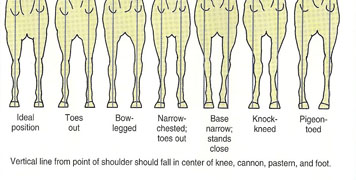 Figure 12: Conformation of the front leg as viewed from the front. Ideal conformation is represented by the horse farthest to the left. All other diagrams represent undesirable structural conformation of the front legs.
Figure 12: Conformation of the front leg as viewed from the front. Ideal conformation is represented by the horse farthest to the left. All other diagrams represent undesirable structural conformation of the front legs.When analyzing the conformation of the horse's legs, it is important to examine the horse from a side view, a front view and a hind view. When observing the front legs from a front view (facing the horse), one should be able to draw a straight line from the point of the shoulder to the ground that bisects the leg exactly in half (Figure 12). The hoof and knee should point forward and be bisected in half by the line. The width of the hooves at the sole should be roughly the same as the width of the legs as they originate from the chest. Deviations from this cause extra strain to be placed on different regions of the legs.
It is important to understand that all of these conformational defects can lead to lameness and blemishes because they cause excessive pressure to be centered on a certain area of the legs. For example, base narrow horses are predisposed to landing on the outside of their hoof wall. This increase in pressure on the outside of the hoof wall can lead to conditions such as ringbone, sidebone and heel bruising. At the opposite extreme, base wide horses tend to toe out. This causes weight to be distributed more on the inside of the horse's hoof and also predisposes them to ringbone and sidebone. Deviations of the knee (bowlegs, knock knees, etc.) cause increased strain on this joint and the ligaments and tendons attached to it. Knock knees (knees set to the inside) tend to also be associated with pigeon toes and therefore additionally have rotation of either the cannon bone, fetlock or pastern. This causes extreme pressure to be placed on the point of rotation. All of these deviations cause an unequal line of concussion. The concussion from every stride the horse takes causes an impact to travel up the leg unequally. The area that absorbs more of the concussion is more likely to be damaged.
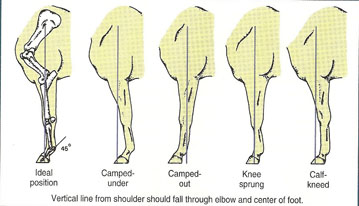 Figure 13: Conformation of the front leg when viewed from the side.
Figure 13: Conformation of the front leg when viewed from the side.When examining the horse's legs, the horse should also be viewed from the side (Figure 13). A straight line should be able to be drawn from the center of the scapula through the front edge of the knee and bisect the hoof. Structural deviations that may be observed are "camping out" and "camping under." A horse that is "camped out" will stand with its legs too far in front of it, causing excessive pressure to be placed on the hooves as well as the knee and fetlock joints. These joints must almost bend backwards for the horse to stand in this position. This stance can be due to conformational defects or sometimes are an indication of hoof pain, such as navicular. The horse that is "camped under" will stand with its legs too far underneath it, causing increased strain to be placed on the ligaments and tendons of the leg. It also causes the horse to carry too much weight on its front end, which can cause lameness due to stress and also causes the horse to have a short, choppy stride and potential stumbling. It is important to recognize that the way the horse is standing greatly influences this view from the side. Be sure the horse is standing naturally and squarely before concluding that it is either naturally camped out or camped under. Many horses will stand this way simply because they are not correctly stood up by the handler.
Two other conditions that may be observed from the side of the horse are calf knees (back at the knee) and buck knees ("knee sprung" or over at the knees). If the line does not bisect the knee but instead is to the front of the knee (i.e., the knee looks as if it is bending the wrong way), the horse is considered calf kneed. This is typically considered to be the more problematic of the two faults since it causes excessive strain on the back ligaments and tendons of the leg as well as pressure on the front of the carpal joint, making the horse more prone to carpal arthrosis. If the line is in back of the knee (i.e., the knee looks like it is bent even when the horse is fully bearing weight on the leg), the horse is considered "over at the knees" or "buck kneed," a condition that also distributes pressure unequally over the leg.
Hind leg conformation
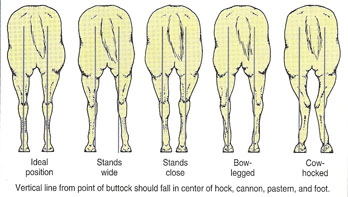 Figure 14: Conformation of the hind legs as viewed from behind. The horse farthest to the left represents ideal conformation while the others represent commonly seen structural flaws.
Figure 14: Conformation of the hind legs as viewed from behind. The horse farthest to the left represents ideal conformation while the others represent commonly seen structural flaws.The horse's hind legs should also be examined for structural deviations by viewing them both from the side and from behind the horse. When facing the hindquarters of the horse from behind (standing behind the horse looking at its tail) one should be able to draw a straight line from the horse's buttock through both its hock and fetlock (Figure 14). The hooves on the back leg will not be as straight as the front hooves; it is normal for these to point slightly outward.
Problems associated with horses that are either cow hocked or base narrow include additional stress placed on the leg and joints (bog and bone spavins can be associated with cow hocks), as well as potential interference when the horse moves due to part of the legs being closer together than normal. Horses that are bow legged have the opposite condition of cow-hocked horses. Bow legged and base wide horses often have trouble being able to properly use and push off of their hind legs and therefore can lack the athletic ability of a horse with proper conformation.
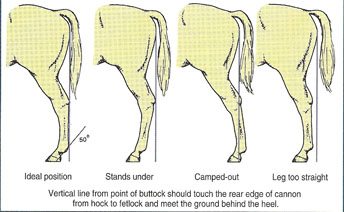 Figure 15: Conformation of the hind legs as viewed from the side. The second represents a horse with sickle hocks (too much bend). The fourth illustration represents a post-legged horse.
Figure 15: Conformation of the hind legs as viewed from the side. The second represents a horse with sickle hocks (too much bend). The fourth illustration represents a post-legged horse.When examining a horse's hind legs from a side view with the horse standing squarely, you should be able to draw a line perpendicular to the ground that touches the point of the horse's rump cheek, the back of the hock and the back of the fetlock (Figure 15). This conformation of the hind leg allows the horse to carry weight well over its hin
Status and Revision History
Published on Apr 04, 2012
Published with Minor Revisions on Mar 14, 2016


























































